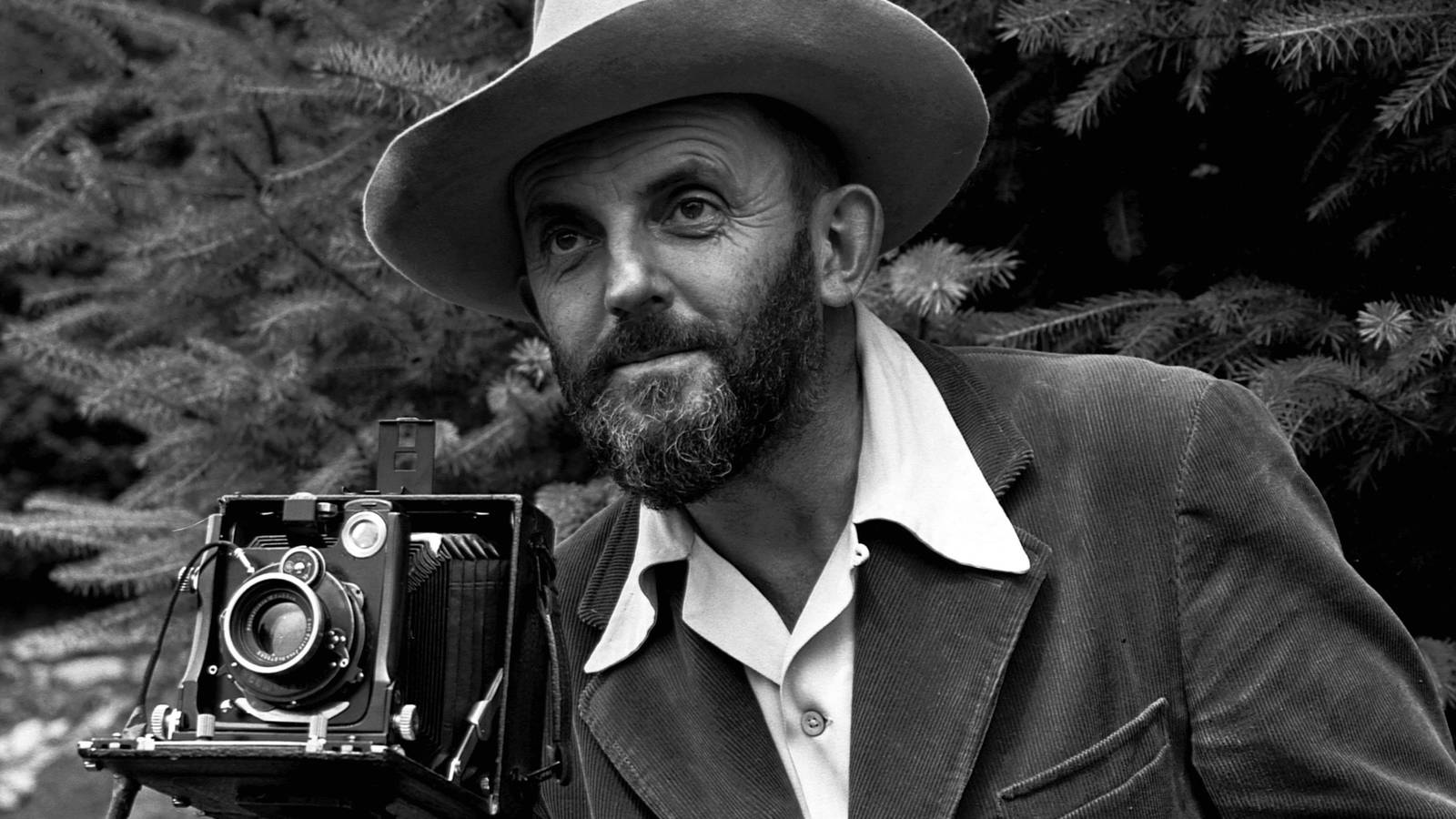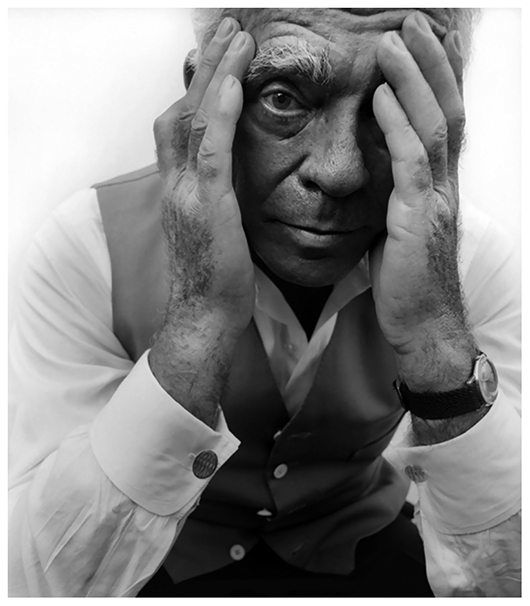Ansel Easton Adams (February 20, 1902 - April 22, 1984) was an American photographer, born in San Francisco, developer of the zones.
Known for his black-and-white landscape photography of Yosemite National Park in the United States (among other landscapes) and as the author of numerous books on photography including his trilogy of instruction manuals technique (The Camera, The Negative and The Copy). He founded the photographic association Grupo f/64 together with other masters such as Edward Weston, Willard Van Dyke, Imogen Cunningham and others.
Your zone system is a demonstration of how your camera or camera's light meter (or light meter) measures the middle gray of 18% reflectance as the middle zone. The photographer must increase the exposure (or decrease it) depending on how many gray steps they want to set as the metering point. The photometer of any camera, even digital, always "wants" to see the measured area as a medium gray.
Life
Ansel Easton Adams was born on February 20, 1902 in San Francisco, California. He was considered a photographer and environmentalist. He captured black and white in the majesty of nature. In the 1930s he developed the Zone System. When Adams was only 4 years old, he was present in the 1906 San Francisco earthquake, where he suffered a ruptured nasal septum.</ p>
The only child of Charles Hitchcock Adams and Olive Bray, he grew up in a Victorian (social and conservative) environment. Despite being intelligent, he was very shy, which, together with his dyslexia, caused him some problems when trying to fit in at school. Ansel Adams fought throughout his life to defend and protect nature.
She studied piano for several years, which gave her discipline and structure. He got his start in photography using a Kodak #1 Box Brownie camera given to him by his parents. He joined a club where he met his wife, Virginia Best, and they were married in 1928, fathering 2 children.
In 1927 Albert M. Bender appeared in his life, who helped him by giving him energy and security.
In 1930, Ansel Adams met photographer Paul Strand. His images had a great impact on Adams, helping him to move away from the pictorial style and towards the style of "straight photography" (direct photography, or pure), where the clarity of the lens is the most important thing, and where photography has to undergo as few adjustments and tweaks as possible.
In 1927 Ansel Adams met Edward Weston, with whom he developed a great friendship. Together, Adams, Strand, Cunningham and Weston formed a group called "f/64" in 1932. This group promoted and evolved "straight photography".
Adams became increasingly noted for his energy and enthusiasm. He first visited New York in 1933 and met Alfred Stieglitz, a photographer he had always admired. Stieglitz helped him do his first exhibition.
In 1936 he helped organize the first photography section at the Museum of Modern Art in New York (MoMA). There he met Beaumont (historian of photography) and Nancy Newhall (writer-designer). Later he would collaborate with Dorothea Lange for a piece of Life magazine.
On August 6, 1953, Adams wrote a letter to Stieglitz, telling him about his precarious financial situation. It was then that he started doing commercial photography. It was not something he loved, since he believed that it did not allow him to exploit his creativity, although it provided him with enough money to live on. He has worked for brands like IBM, AT&T, National Park Service, and Kodak, and for magazines like Life and Fortune, as well as being a consulting photographer for Polaroid and Hasselblad. This work not only helped Adams for the aforementioned financial support, but also made his photographs an icon of North American natural beauties recognized in all parts of the world.
Weston and Strand began asking him for technical advice. Adams developed the famous “zone system”, a measurement and development method used to divide the light gradation of a scene into 11 different zones, from white to black. This allowed him to visualize the different levels of gray in the final photograph with great precision.
His images began to become symbols of Anglo-America, many of them centered on Yosemite National Park. Ansel Adams fought to defend nature and its animals, landscapes being the main subject of his photographs. Precisely for this he was often criticized, since you could rarely see a person in a photograph of him. The French photographer Henri Cartier-Bresson said about him: "The world is falling apart and all that Adams and Weston photograph are stones and trees." Despite opinions like that, he received the international Hasselblad Foundation Award in 1981.
Some say that Adams photographed places that no longer exist, but for others the opposite is true; some places still exist because of Adams and his enthusiasm and effort to save these places, through his photographs.
He died on April 22, 1984, of heart failure, possibly aggravated by pancreatic cancer.
The Mural project
In 1941, Adams was hired by the US Government Department of the Interior to take photos of wildlife parks, aboriginal reservations, and other locations, to be used as photographs murals on the new Department building in Washington, DC. Part of his agreement with the Department was that he could also take pictures for his own use, using his own film and processing. Although Adams kept meticulous records of his trip and expenses, he was less disciplined about dating his images, refusing to date "Moonrise over Hernandez," so it was unclear whether he belonged to Adams or the US Government. The position of the moon allowed the image to be dated by astronomical calculations and it was determined that it was taken on November 1, 1941, a day that Adams had not worked for the Department, so the image belonged to Adams. The same dispute turned out not to be true of many other negatives, including The Tetons and Serpentine River, which, having been made for the Mural project, are owned by the US government. The Mural project was halted by entry into World War II. from the United States in 1942, and was never finished.
Zone system
The x-zone system is a photographic developing and exposure technique invented by Ansel Adams and F. Archer in the late 1930s. The zones provide the photographer with a systematic method to define precisely the relationship between the way you see the photographic subject and the result that the work will achieve. In a way, the zone system plays the same role as color management for digital photographers. It allows a direct correlation between the visual world and the final photographic print.
Contrast control of this type is possible thanks to a concept traditionally summed up in the following expression: “Expose for shadows and reveal for highlights”. The exposure time has a direct effect on the darker areas of the composition while the development time has it on the lighter areas. By correctly exposing the film and increasing or decreasing development times, photographers using the zone system will be able, within limits, to produce negatives that result in superb prints regardless of how contrasty or flat the photographed subject turns out to be.</ p>
Many photographers came to understand the above through trial and error long before the zone system was formulated. What was first for Ansel Adams and Fred Archer was to create a way for the photographer to easily translate the range of tones he could see into a visual guide that could be used to measure the different tonal ranges of the subject in a practical and predictable way. This process is known as “Preview” and depends on three interrelated ways of defining something called a “Zone”.
(Source Wikipedia)
Access the Ansel Adams Gallery
The most important component of a camera is behind it.








 English (United Kingdom)
English (United Kingdom)